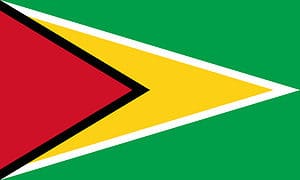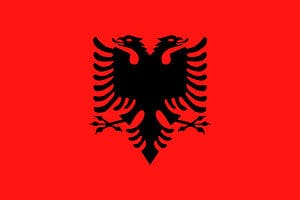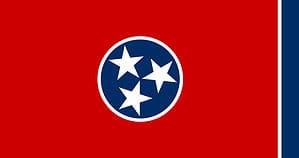Flags of the world tell us a lot about what is important to the governments and people they represent. Stars are a particularly powerful symbol found on many flags. In some cultures, they represent hope, a navigation guide, or religious figures and concepts. The number of points on a star can reference the main teachings of a religion or philosophy, the number of ethnic groups or geographic regions of a country, or other important references.
Five-pointed stars are particularly common in international flags, but some countries have flags with more or fewer points. Let’s look at some of those other multi-pointed stars and discover what they mean and what they represent in their home countries.

Stars have entranced humans since ancient times for their beauty, as a navigational aid, and as symbols of religious guidance.
©Allexxandar/Shutterstock.com
Aruba
On Aruba’s flag the dominant color is light blue, which speaks to the glistening ocean surrounding this island nation. The yellow stripes have multiple meanings, including abundance, yellow flowers, and the country’s freedom. White symbolizes peace, purity, and the country’s pristine beaches. The red star points to the four points of the compass and honors the fact that the Aruban people have come from all over the world. The color red symbolizes love and the sacrifice of the people for independence.

The red star on a blue background in the flag of Aruba symbolizes the global origins of the Aruban people.
©Anastasiia Guseva/Shutterstock.com
Australia
Australia is a former British colony. Its flag honors its heritage by including the Union Jack, the iconic flag of the United Kingdom, in its upper hoist-side corner. Below it is a large white, seven-pointed star known as the Commonwealth Star signifying Australia’s ongoing relationship with the British Commonwealth. The seven points of this star represent the six states of Australia and a seventh point for the Australian territories. The five stars on the fly side of the flag are the Southern Cross constellation, a dominant feature of the night sky in the Southern Hemisphere that was an important navigational aid for early explorers.
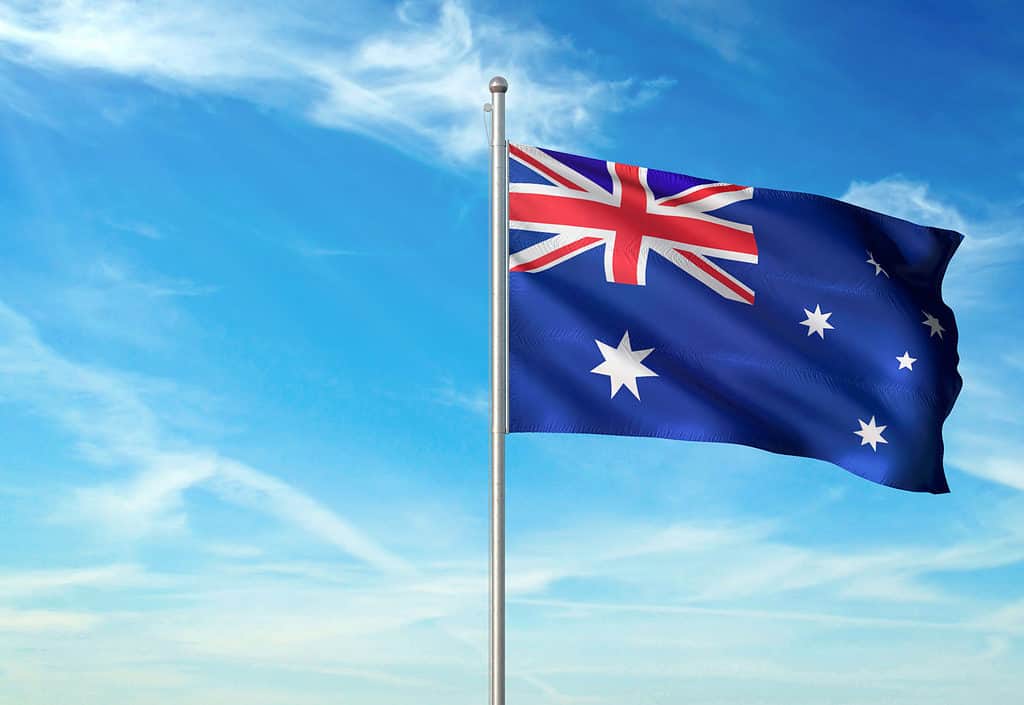
The stars of the Australian flag symbolize Australia’s relationship with the British Commonwealth.
©iStock.com/Oleksii Liskonih
Azerbaijan
The flag of Azerbaijan has equal horizontal bands of blue, red, and green. The blue band represents the Turkic heritage of the Azeri people, the red band represents progress and modernity, and the green band represents Islam, which is the dominant religion in Azerbaijan. The crescent moon and star in the center of the flag are popular emblems of Islamic culture. The eight-pointed star stands for eight letters in the word “Azerbaijan,” written in Arabic. Alternatively, the star points may represent the eight different Turkic people groups of the region in pre-Soviet times.
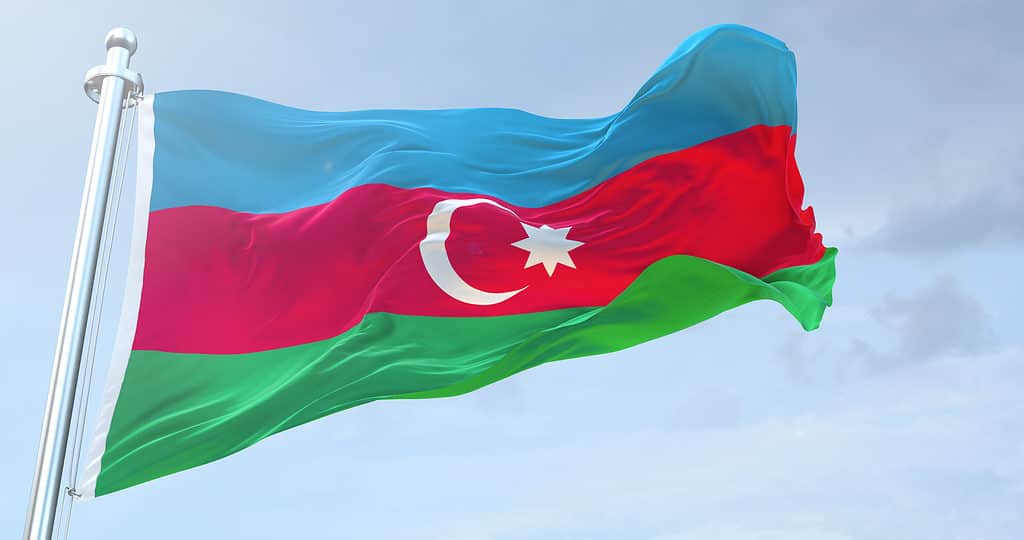
Azerbaijan’s eight-pointed star represents the eight letters of the country’s Arabic name and the eight different Turkic people groups.
©iStock.com/EA
Burundi
The flag of Burundi, a former Belgian colony in East Africa, features three red stars that have multiple levels of meaning. First, they represent the three main ethnic groups of Burundi: the Hutu, the Tutsi, and the Twa. They have had bloody ethnic conflicts in the past, so the flag respects all three in the hope that they will go forward in peace. The three stars also bring to mind the country’s motto: “Unity, Work, Progress.” Finally, they represent traditional loyalty to God, king, and country. This is more of a historical allusion, as Burundi ceased to be a monarchy in 1966.
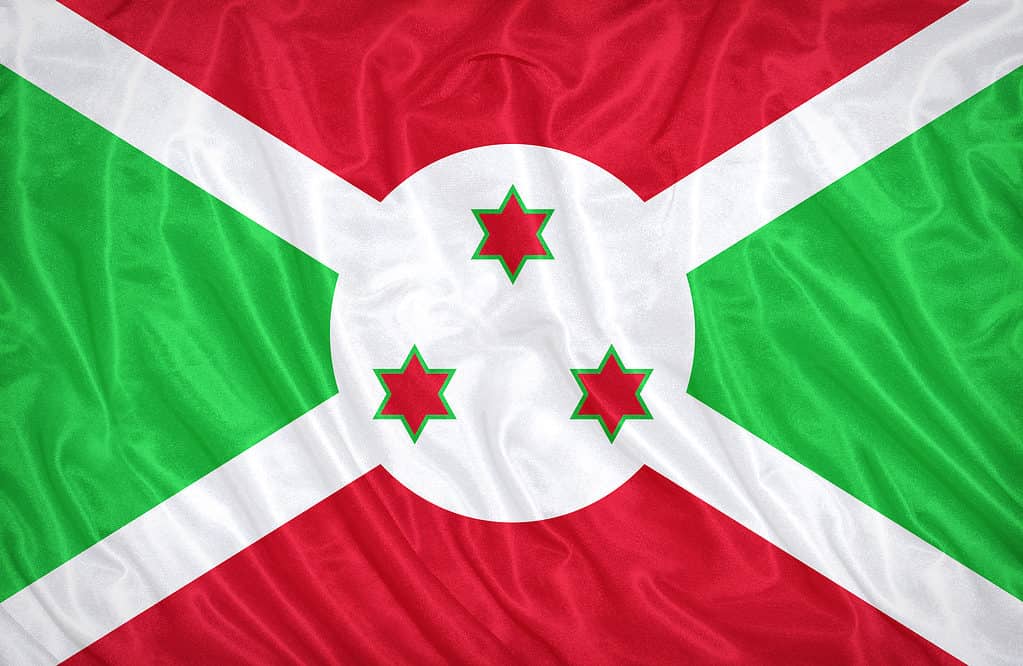
Burundi’s flag uses red stars to honor the three main ethnic groups, the country’s motto, and their historical loyalties.
©Wasan Ritthawon/Shutterstock.com
Croatia
The Croatian coat of arms is in the center of its flag. Arranged across the top of its red-and-white checkered design are four traditional shields that were used at different times or in different regions of Croatia. Two of the shields, the ones on the top left and the top right, include multi-pointed stars. The interpretation of the star symbols in each shield is the same: it represents the “morning star,” which we know today as the planet Venus, often the brightest object other than the moon in the evening sky.
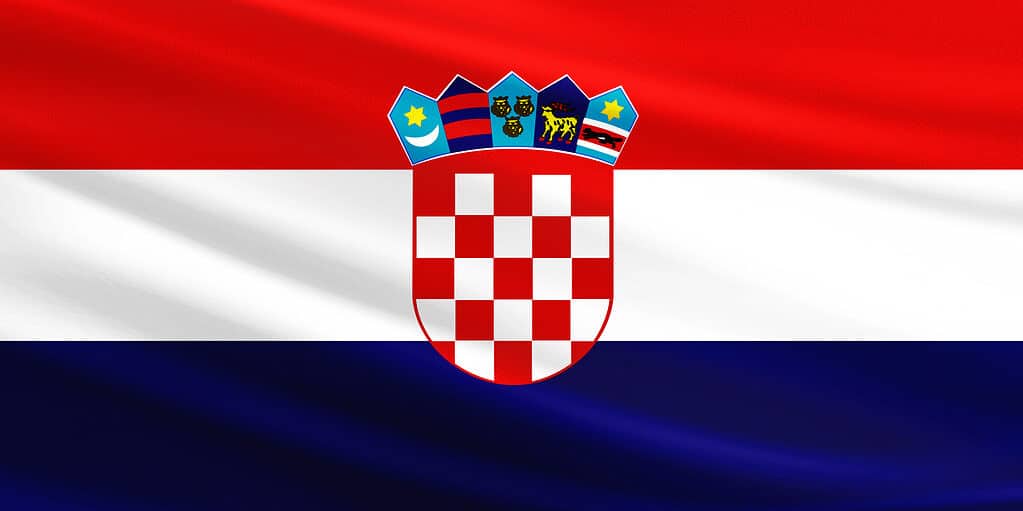
The two stars on Croatia’s flag both represent the planet Venus, otherwise known as “the morning star.”
©Osman Bugra Nuvasil/Shutterstock.com
Equatorial Guinea
Equatorial Guinea is a country on the west coast of Africa that was formerly a Spanish colony. Today, as an independent country, it flies a flag with a coat of arms with six overarching stars above it. These represent the country’s mainland and its five offshore islands.
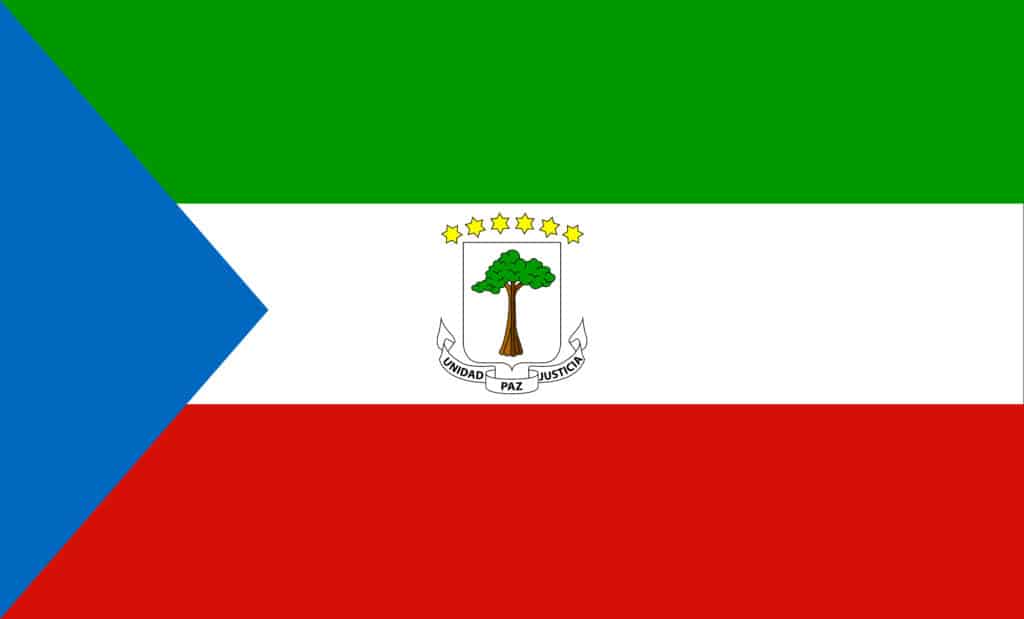
The six stars on the flag of Equatorial Guinea represent the country’s mainland and its islands.
©Lana2016/Shutterstock.com
Israel
The flag of Israel includes a blue Star of David centered in the middle of a blue and white striped flag. According to legend, it is a symbol that was painted on the shields of the soldiers of Israel’s ancient King David. Today it is a universally-recognized symbol of Judaism and Jewish people. Notice that drawing the star is something you can easily do by drawing an equilateral triangle, then one just like it, upside down, on top.
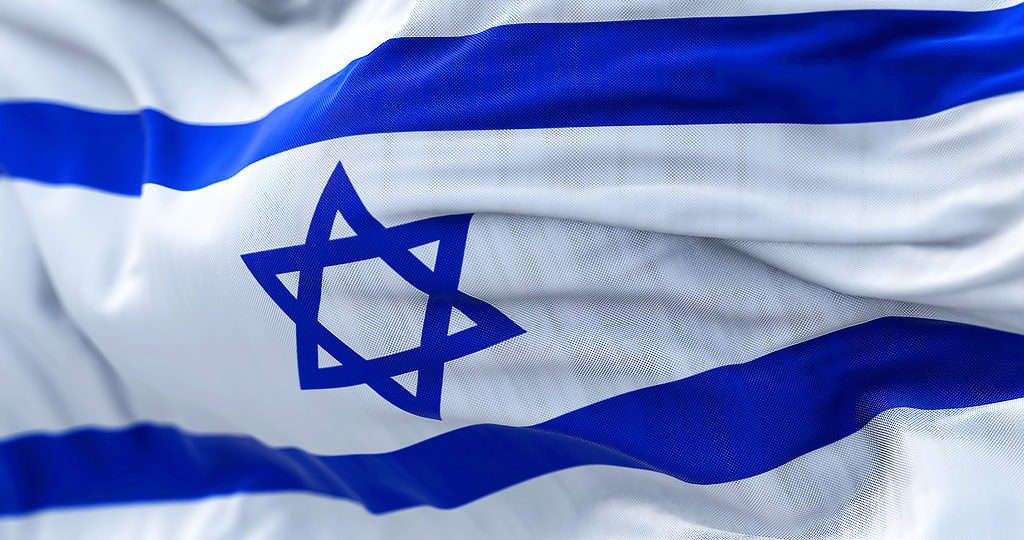
The Star of David is a well-recognized symbol of Judaism and the Jewish people today.
©iStock.com/rarrarorro
Jordan
The flag of Jordan uses colors that represent various Arab ruling dynasties, but of course it’s the seven-pointed star that attracts our attention for this article. It represents Arab unity. Why seven points? Because the capital city, Amman, is built on seven hills, and the first chapter of the Qur’an consists of seven verses.
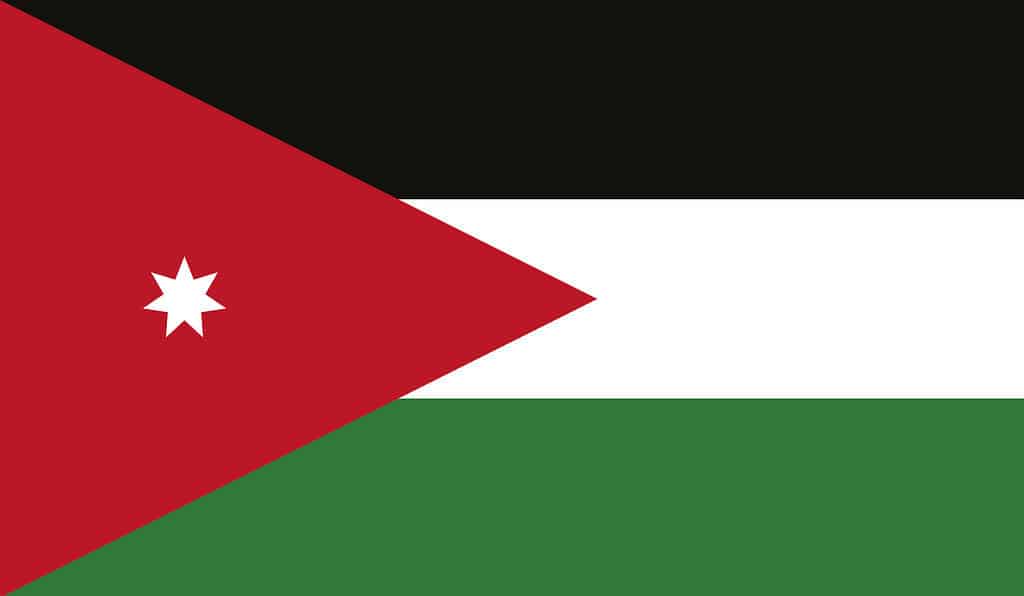
A seven-pointed star in this flag represents Arab unity; the seven hills of Amman, Jordan; and the first chapter of the Qur’an.
©iStock.com/Burak Ceyhan
Malaysia
The flag of Malaysia looks a good deal like the United States flag, but that’s only because both of the were British colonies and chose designs that looked like the flag of the British East India Company. The crescent and star on the Malaysian flag are Islamic symbols, reflecting the predominant faith of the country. The star has multiple points to reflect the unity of the various geographic regions of the country.
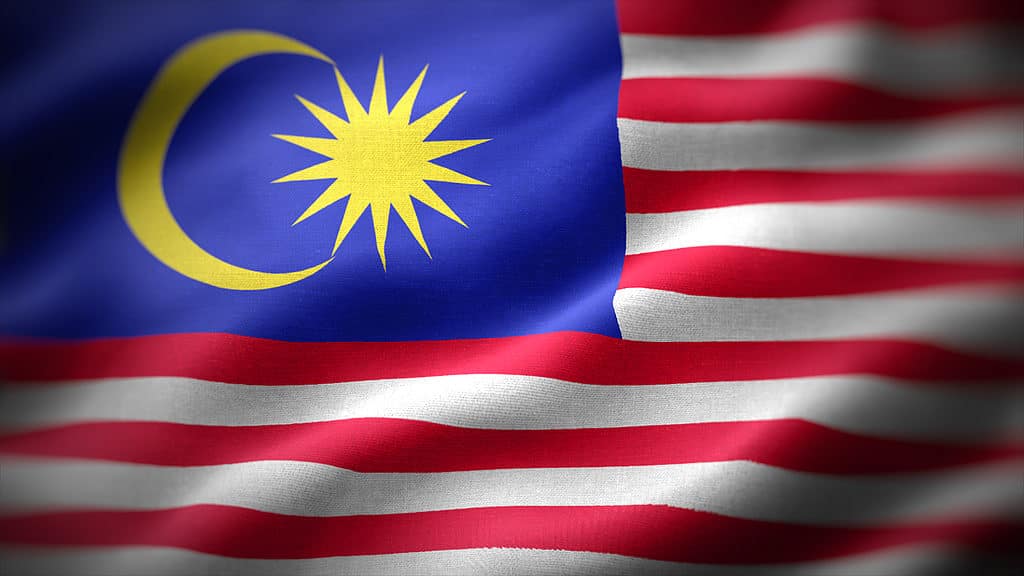
Malaysia’s multi-pointed star honors the geographic regions of the country.
©Tatohra/Shutterstock.com
Marshall Islands
The flag of the Marshall Islands has a white star representing the island nation. The star has 24 points referencing the country’s 24 municipalities. The four long rays stand for the capital and the administrative centers of the country’s subdistricts.
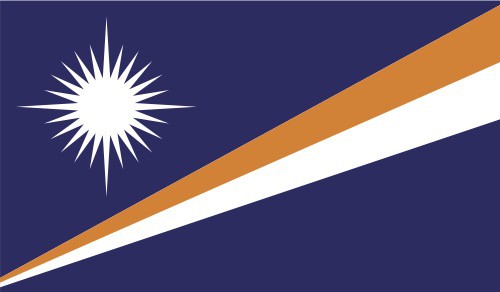
The star on the Marshall Islands flag represents the country and its administration.
©iStock.com/MekongAnimated
Nauru
The flag of Nauru features a twelve-pointed star celebrating the twelve indigenous tribes of the island. An interesting fact about Nauru is that it is one of the most remote and least-visited countries in the world, receiving only a few hundred visitors a year.
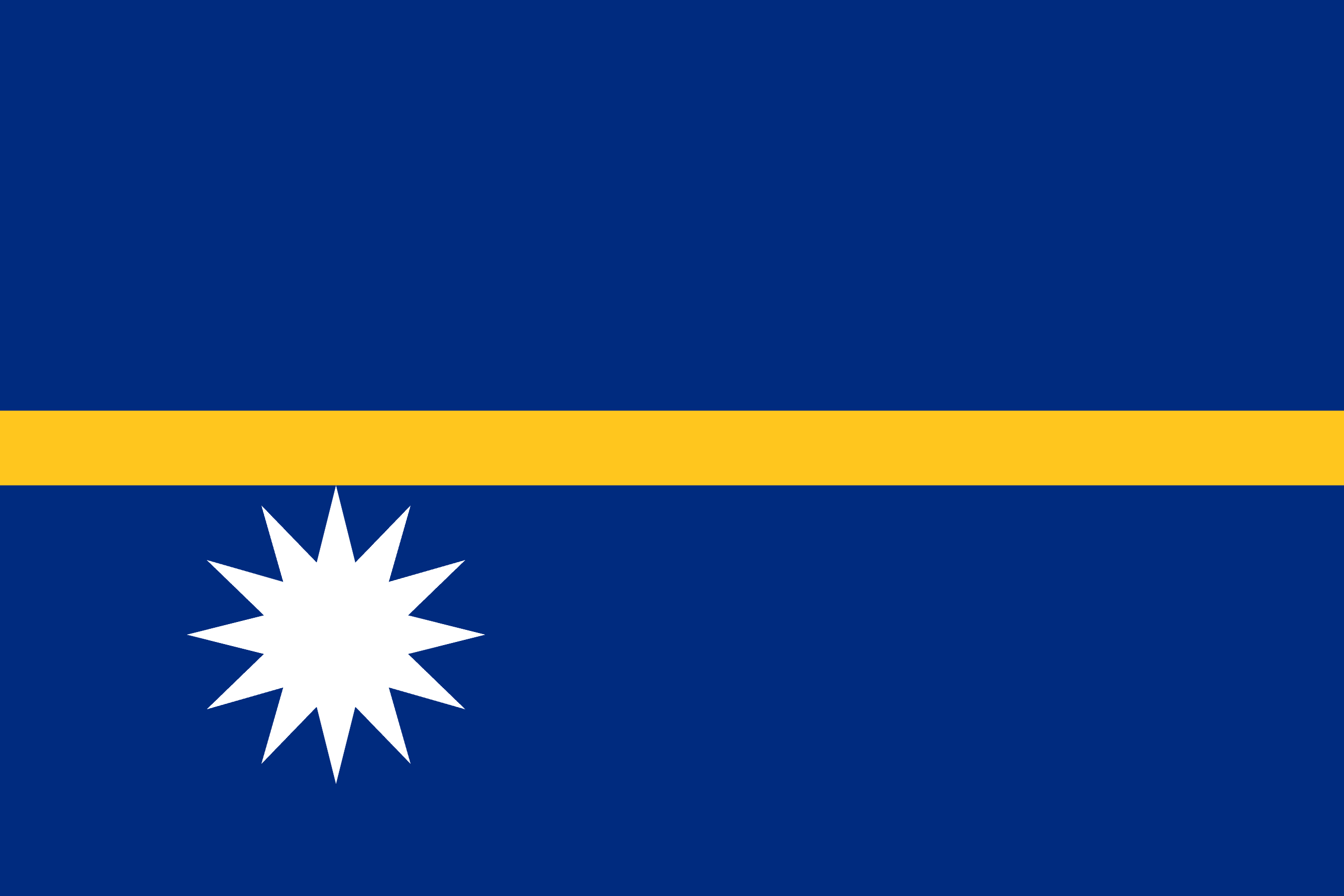
The flag of Nauru features a star representing the Pacific island nation.
©https://upload.wikimedia.org/wikipedia/commons/1/14/Flag_of_Nauru_%283-2%29.svg – License
Slovenia
Slovenia’s flag uses the colors red, white, and blue as many other East European countries do. Slovenia was part of Yugoslavia until that country broke up in a protracted civil war. The coat of arms on the country’s flag includes three six-pointed stars on it. The meaning of this part of the design is unclear, but it was a traditional part of a local medieval coat of arms connected with Slovenia.
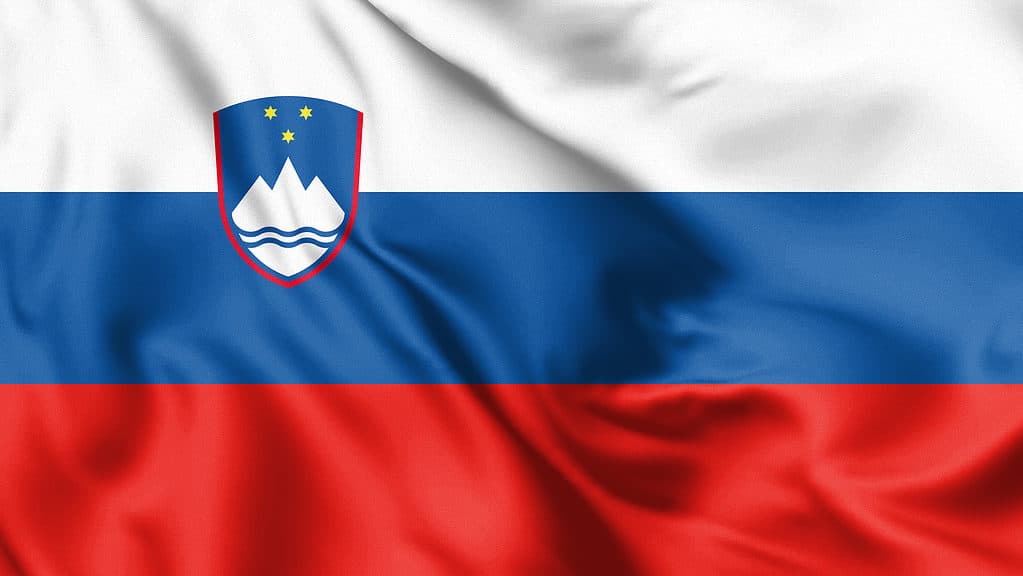
Three stars have been a symbol used in a Slovenian coat of arms since medieval times.
©J_UK/Shutterstock.com
As you can see, stars are some of the most meaningful symbols on national flags, but their meanings are often mysterious and need explanation to understand their full significance. We hope this article has helped shed some “starlight” on the subject.
Curious about more flags? Click here to learn about every single flag in the world! – Every Flag in the World: Photos, History, and More
The photo featured at the top of this post is © iStock.com/Oleksii Liskonih
Thank you for reading! Have some feedback for us? Contact the AZ Animals editorial team.



